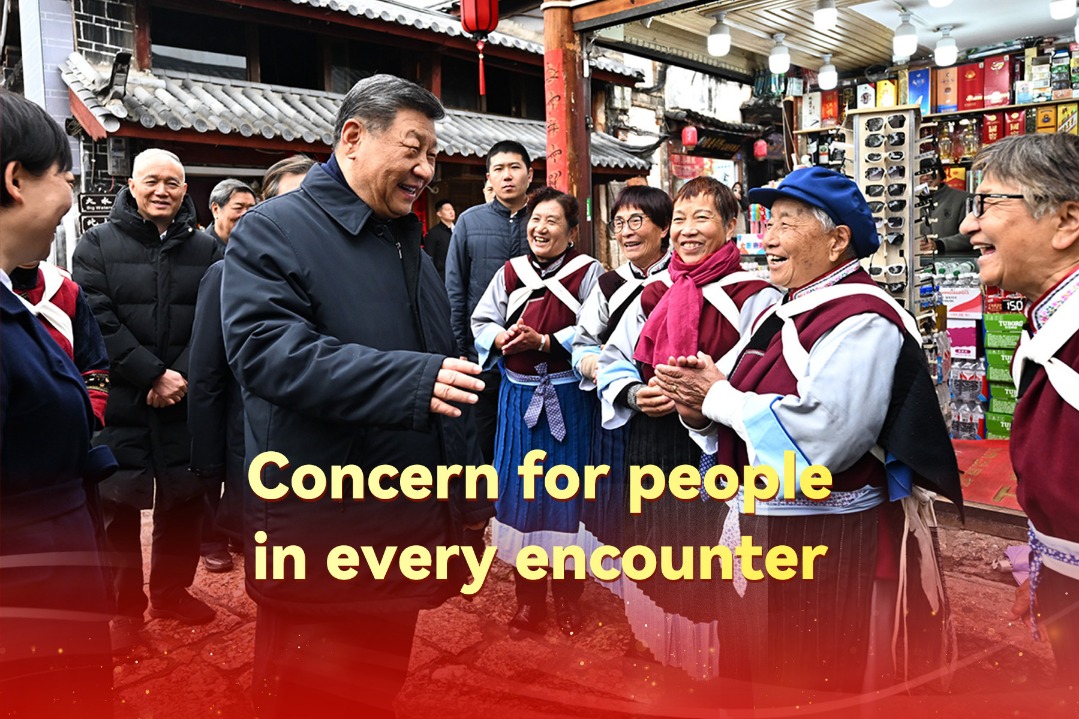Treasury of Ming well received

You do not need to look too closely to spot the treasure. Here there is a large porcelain flask painted with a glazed blue decoration of lotus flowers; over there is a crown made of leather and bamboo; and elsewhere you will find red lacquer furniture, hanging scroll paintings on silk, watery-green ceramics and blue-and-white porcelain works of art by the dozens.
These are the stunning items among about 280 objects now on display at the British Museum in London that showcase the rich culture and global influences of the Ming Dynasty (1368-1644).
Between 1400 and 1450 the dynasty ruled China as a superpower, established Beijing as the capital and built the Forbidden City.
Since the exhibition, "Ming: 50 Years That Changed China", opened on Sept 18 it has had more than 40,000 visitors, the museum says.
The exhibition seems to have been well-received by a diverse audience, says Jessica Harrison-Hall, the manager who, with Professor Craig Clunas of Oxford University, was responsible for bringing the exhibition to fruition.
"It has attracted everyone from primary school students, to university students, to people who love art, architecture and history in general," Harrison-Hall says.
With keen interest in the exhibition, particularly among the young, many are starting to ask questions about China, she says.
"We've had children as young as eight years old coming around and marveling at the lovely swords. Everybody looks at the Chinese language and thinks 'This is so difficult'. People tend to think of China as monolithic, when in fact it is and was so multicultural, diverse and engaged in the international world, long before they even rivaled the Europeans."
The exhibition opens a window on the history and culture of what was a golden age.
"I didn't know very much about the history of the Ming Dynasty before this morning, but I know a lot after the visit," Martin Tyson, a retired lawyer says after stepping out of the museum.
Tyson, from Scotland, calls the exhibition amazing and that it taught him a lot about Chinese culture.
In 2007 the British Museum played host to another collection of famous Chinese guests, the Terracotta Warriors, which had an overwhelming reception.
"The public has less associations with the Ming. Most only think of porcelain but everyone knows the Terracotta Warriors," Harrison-Hall says, adding that although Xi'an's famous soldiers may have been better known to a Western audience, the Ming exhibition is no less significant culturally.
Putting on the exhibition has involved more than 30 institutions, 10 of them from China and the rest from five other countries, lending items of great cultural and material value.
The displays are arranged in a bottom-up fashion, beginning with a look at the local courts that coordinated everyday life in the Ming Dynasty, alongside humble, human representations of the emperor, and ending with the empire's international voyages and achievements.
"Usually with China you do the whole of Chinese history or focus on huge chunks of time and space, and we wanted to narrow it in so that you could say something more interesting," Harrison-Hall says, speaking of the 50-year time frame.
One particularly interesting character of the time is Admiral Zheng He, known among Westerners as the Christopher Columbus of the East, and who lived a century earlier.
Leading the world's mightiest fleet, with 300 ships and as many as 30,000 troops, Zheng's armada made seven epic voyages, reaching Southeast Asia, the Middle East and Africa. At the time Ming China was thoroughly connected with the outside world.
"There are a lot of myths surrounding Zheng He," Harrison-Hall says, and the exhibition aims to give the true story using historical artifacts.
Although most of the audience has been Western, Harrison-Hall says, visitors have flown in from China to see it, many keen to see the original copy of The Yongle Cannon, the world's earliest and biggest encyclopedia, written by 2,000 scholars and published in 1408.
However, some visitors who are Chinese or know a lot about China say the exhibition is too limited.
"I really appreciate that all the objects are displayed separately according to theme," says Shi Xiaoxia, a Chinese university student. "It's very logical and shows the Ming history in a very clear way. But there is a lot more to Ming history than this."
Sian-Chow-kwanyun, a Briton who has lived in Hong Kong and has seen many similar exhibitions in China, says: "It's amazing, especially the history and paintings. However, the porcelains in this exhibition are limited. They should display more."
Since the exhibition was first mooted it has taken five years for the curators to make it a reality.
Harrison-Hall and Clunas are specialists in Ming history and consider it an essential part of the history of China, a country becoming increasingly interesting to Westerners.
The exhibition not only cost a lot in time, but also money, something that the oil company BP has helped cover as a sponsor.
Even if some visitors have quibbles about what they see as limitations in the exhibition, many others who have seen it say it pays a big tribute to Chinese history, for the first time assembling items of such value from the period under one roof for Britons and others to enjoy and learn about.
One visitor, Chong Huai Seng, from Singapore, says: "These objects are not only on display; they really are telling a story."
Carolynn Look and Zhang Kexin contributed to this story.
zhangchunyan@chinadaily.com.cn
| Visitors at the "Ming: 50 Years that Changed China" exhibition at the British Museum in central London. Provided to China Daily |
(China Daily Africa Weekly 11/14/2014 page25)































